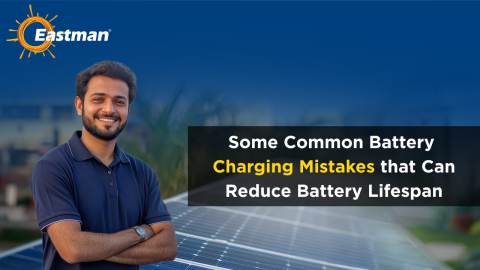
Filling Battery with Water - Important Points for Homeowners
In a world reliant on uninterrupted power, understanding the heart of your backup systems – the battery – is paramount. This engaging blog simplifies complex battery concepts, guiding you through the essential practices that keep your home powered during outages.
From demystifying battery types to unveiling the crucial role of distilled water, each section offers insights that are crucial for homeowners to know. With step-by-step guides for DIY watering, safety precautions, and future-proofing your battery setup, you'll be empowered to ensure longevity, reliability, and energy efficiency.
Embrace the knowledge within this blog to transform your home into a fortress of preparedness and sustainability!
1- Battery Basics for Homeowners
Batteries are the unsung heroes of our modern lives. From smartphones to cars, and even more significantly in the context of this blog post, our homes' backup power systems, batteries play a vital role. In this section, we'll demystify battery types, delve into the importance of maintaining them, and outline key points to keep in mind as responsible homeowners.
1.1- Battery Types Made Simple
For those of us who aren't battery engineers, the array of battery types can be perplexing.
However, when it comes to home backup systems, the most common type you'll encounter is the lead-acid battery. These batteries have been around for decades and have proven their reliability. Think of them as the workhorses of backup power – dependable and capable of delivering the needed energy during outages.
Picture this: a storm rages outside, winds howl, and rain pelts against the windows. Your home, however, remains illuminated and functional due to a well-maintained battery backup system. This scenario underscores the significance of battery maintenance. Regular checks are akin to giving your batteries a health check-up. They ensure that your power supply remains constant when the grid fails you.
Vital Aspects of Battery Maintenance
Let's dive deeper into the three vital aspects of battery maintenance that every homeowner should be aware of:
- Frequency of Checks
Regularity is key. Just like servicing your car, your batteries demand attention. Depending on the manufacturer's recommendations and usage patterns, you might need to inspect and maintain them every few months. These routine checks are the frontline defence against unexpected power interruptions.
- Avoiding Overfilling
Batteries are like precise machines – they function optimally when everything is in balance. When it comes to lead-acid batteries, maintaining the right electrolyte level is crucial. Overfilling can lead to leaks, corrosion, and even damage. Always follow the manufacturer's guidelines for the correct electrolyte level to keep your batteries in prime condition.
- Using Distilled Water
Here's a pro tip: only use distilled water for topping up your batteries. Ordinary tap water might contain minerals and impurities that can compromise battery performance and longevity. With the usage of distilled water, you're ensuring that your batteries receive the clean hydration they need to function at their best.
Now we look at benefits of prompt battery maintenance.
DIY Battery Watering: Step-by-Step Guide
Empowering homeowners with actionable knowledge is our goal. Follow these steps to confidently water your batteries and ensure they're in top-notch condition.
- Gather Your Tools
You'll need distilled water, safety gear (gloves and goggles), a water-filling system (if available), and a flashlight (for clear visibility).
- Prep Your Environment
Work in a well-ventilated area with sufficient light. Safety first – put on your gloves and goggles.
- Open Battery Vent Caps
Carefully remove the vent caps from each battery cell. This allows gases to escape during watering.
- Check Water Levels
Peer into each cell and ensure the water level is just above the plates. If you have a water-filling system, follow its guidelines.
- Add Distilled Water
Using a funnel or the water-filling system, slowly add distilled water to each cell. Avoid overfilling – a common mistake that can lead to problems.
- Replace Vent Caps
Once the water levels are appropriate, put the vent caps back on securely.
- Clean Up
Wipe away any spilt water to prevent corrosion.
- Disconnect Charger and Load
Before closing the battery compartment, ensure that the charger and load are disconnected. Safety always comes first.
Ensuring Safety During Watering
Proper battery watering not only enhances battery health but also ensures your personal safety. Following these safety measures is non-negotiable.
6.1- Gear Up for Safety: Gloves and Goggles Are a Must
Just as a knight gears up for battle, you should gear up for battery maintenance. Wear protective gloves and goggles to shield yourself from potential contact with battery acid or splashes.
6.2- Ventilation: Breathe Easy, Stay Safe
Picture your workspace as a gentle breeze-filled garden. Adequate ventilation is crucial during battery watering to disperse any harmful gases that might be released during the process. Working in an airy space minimizes your exposure to these gases.
6.3- Disconnecting Charger and Load: The Final Safety Step
Before embarking on battery maintenance, it's vital to disconnect the charger and any load connected to the batteries. This prevents electrical accidents and ensures your safety during the process.
In conclusion
Did you make it to the end of this blog? Well, thanks to you! Also, we guess it is safe to assume that you are now armed with insights into battery types, watering techniques, and safety measures. This means you are now equipped to ensure a seamless power supply even during critical conditions.
With your decision to integrate battery care into your routine, you're safeguarding against inconveniences and optimizing efficiency. Remember, just as water is life, distilled water is the elixir for your batteries' longevity.
Now go ahead and put the knowledge gained on the inverter with battery for home to test and let your home stand strong as an example of energy resilience.
Recent Blogs

How Eastman Solar Battery Backup is Suitable for Residential & Commercial
With rising electricity demands, frequent grid fluctuations, and the growing shift toward renewable energy, solar battery backup
Read More
Why BMS is Critical for Solar Lithium Batteries
As solar energy adoption accelerates across residential, commercial, and industrial sectors, lithium batteries have quickly becom
Read More
How Solar Batteries Work at Night: The Complete Process
Ever wondered what happens to your solar power after sunset? Your panels are asleep, the sky is dark, yet your home still runs smoothly: fans spinning
Read More
Some Common Battery Charging Mistakes that can Reduce Battery Lifespan
In today’s power-driven world, whether you rely on solar batteries, inverter batteries, lead-acid batteries, or lithium-ion batteries, maximizing
Read More
Why Eastman Solar Combo Kits Are the Perfect All-in-One Solution
In an era where sustainable living is not just a choice but a necessity, embracing solar energy stands out as a powerful step forward.
Read More
